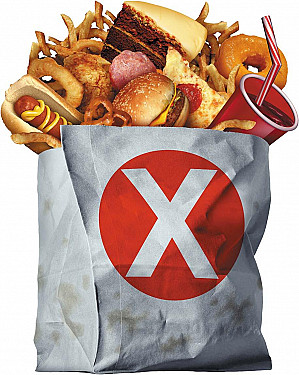Returning to restaurants — and to healthy eating

Lots of us gave up restaurant food when the pandemic started. Maybe it was due to concerns about COVID-19 exposure, the closing of favorite eateries, finances, or simply the joy of cooking at home.
Now, as we return to occasional restaurant dining or takeout, it's time to enjoy the foods we missed. And just as we did before the pandemic, it's important to keep good nutrition in mind when ordering.
Look online first
Thanks to online menus, it's easy to see the offerings of most restaurants and food trucks. Large restaurant chains even post nutrition information. Take advantage of this by looking at menus before eating out. That way, you'll get an idea of the healthy options available to you and what you might order.
If a restaurant doesn't offer an online menu, call in advance and ask what they serve.
Watch for unhealthy ingredients
Restaurant food is delicious for a reason: it's typically full of salt, sugar, saturated fat, and refined grains (white flours, bread, or pasta).
Words that will alert you you to those ingredients include
- fried
- sweet
- cheese
- cream or creme
- butter or beurre blanc (a butter sauce with shallots and white wine)
- flour (in restaurants, that usually means refined white flour, not whole grain flour).
- breaded
- beef, pork, lamb, veal.
If you see those words describing a menu item, look for something a little healthier. Such choices might include vegetarian or vegan options, fish, or chicken. Why is this helpful? Because eating fewer foods with unhealthy ingredients and focusing on healthier ingredients can lower risks for weight gain and chronic disease, such as heart disease or diabetes.
Ask for help
If the menu doesn't offer foods on the healthier side, enlist your server's help. Explain that you're following a healthy diet and need a meal that will stay within your guidelines.
That might mean
- requesting that the kitchen holds the butter, sugar, or salt in your food, or at least goes easy on it.
- asking if it's possible to broil, bake, or poach food instead of frying it or sautéing it in butter. (If a food must be sautéed, ask if the chef can use olive oil instead of butter.)
- making substitutions. For example:
- If a creamy risotto tempts you, ask if it's possible to get brown rice or quinoa instead.
- If you see Chilean sea bass with a jalapeno beurre blanc, ask if there's salsa to take the place of sauce.
- If French fries are offered on the side, ask if you can get salad greens, beans, or fruit instead.
A little cheating
While eating wisely is crucial to health, it might be okay to splurge on a less-than-healthy meal on occasion.
"You don't want to deny yourself the pleasure of food. If you feel like you're always being deprived, you may want to give up on a healthy diet. Just try not to make splurging a habit," suggests registered dietitian Kathy McManus, director of the Department of Nutrition at Harvard-affiliated Brigham and Women's Hospital.
She recommends using the 90/10 rule: eat healthfully 90% of the time, and allow yourself to cheat on a healthy diet 10% of the time. Out of 21 meals in a week (three meals, seven days a week), that would amount to two meals.
Other ways to reduce the impact of a big, fatty, sugary, salty restaurant meal:
- Order a half portion or split a portion with a friend.
- Ask for sauce or salad dressing on the side, and then just drizzle it on food or dip a forkful in for a few drops.
And remember to take your time with every bite: "Eating mindfully will help you slow down, enjoy your meal, and listen to your body's hunger cues so you don't eat too much," McManus says.
And after the year we've had, you may really want to savor these moments.
About the Author

Heidi Godman, Executive Editor, Harvard Health Letter
Disclaimer:
As a service to our readers, Harvard Health Publishing provides access to our library of archived content. Please note the date of last review or update on all articles.
No content on this site, regardless of date, should ever be used as a substitute for direct medical advice from your doctor or other qualified clinician.















